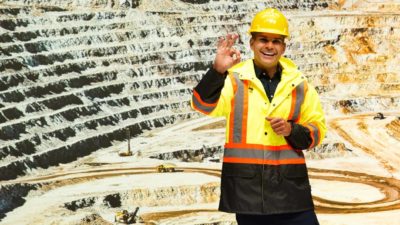Over the past three years, the Lynas Rare Earths Ltd (ASX: LYC) share price has been disappointing. Lynas shares have dropped more than 40% from their all-time high in January 2022 to just over $6 today.
Despite this underperformance, the Lynas share price is still 130% higher over the last five years, handily outpacing the S&P/ASX 200 Index (ASX: XJO), which gained approximately 18% over the same period.
Weak consumer demand for electric vehicles (EVs) and falling global rare earth prices are largely behind such dramatic share price fall.
However, after a 40% drop in its stock value, is this battery metal miner ready to rebound when the global commodity market recovers?
Why did the Lynas share price drop so much?
China dominates the rare earths market with a 70% share in mining and a 90% processing capacity. Lynas is one of only two non-Chinese companies selling rare earths, the critical element in producing EVs and military devices. The other producer is MP Materials Corp (NYSE: MP) located in the United States.
Behind the sluggish share price movement is underwhelming consumer demand for EVs, which heavily use rare earth materials for batteries and other critical components.
The weak demand has pushed down the global rare earths prices, impacting revenue and profitability for producers like Lynas.
According to Lynas' quarterly updates, China's domestic prices for neodymium and praseodymium (NdPr) oxide, one of the important types of rare earth elements, have halved to US$43 per kilogram in a year. This is less than a third of the metal's peak price of $144 per kilogram in March 2022.
What experts say about global rare earths price outlook
Former BHP copper boss Darryle Cuzzubbo is optimistic about the long-term outlook for the rare earths market. In a May 2024 interview with the Australian Financial Review, he referenced projections from Arafura Rare Earths Ltd (ASX: ARU), predicting a supply shortfall by 2032 with global production expected to reach only 65,000 tonnes, far below the anticipated demand of around 126,000 tonnes.
That said, price predictions for any commodities are difficult as the supply and demand dynamics keep on changing. Just yesterday, Europe's largest deposit of rare earth elements was discovered at Fen, Norway. This news, as my colleague James summarised, pushed down the share prices of rare earths producers.
The good news is that Lynas is one of the few producers generating positive operating cash flows at the current low prices. Many other producers remain in the red. This means there could be industry consolidation ahead of us, and if it happens, Lynas has a better chance of becoming the survivor.
What do brokers say, and who else is positive about Lynas?
Mining magnate Gina Rinehart seems to think it's a good time to invest in this critical metal producer. In April 2024, she became a major shareholder in Lynas, holding 5.8% through her company, Hancock Prospecting.
The same company bought 5.3% of the other non-China rare earth producer MP Materials in the US earlier this year. This series of share purchases sparked speculation that she may play a pivotal role in a potential merger between Lynas and MP Materials, as the Australian Financial Review reported.
Brokers see an upside from the current Lynas share price. UBS is cautiously optimistic saying rare earths prices have likely bottomed while not ruling out the possibility of further downside.
Goldman Sachs is another broker remaining optimistic. In a report in April 2024, summarised by my colleague Bronwyn, Goldman highlighted better-than-expected production volume from Lynas Advanced Materials Plant (LAMP) in Malaysia and the Lynas shares' cheap valuation metrics.
Foolish takeaway
In the mining sector, navigating the ups and downs of global commodity cycles is inevitable. Lynas stands out as a key rare earths producer outside of China, offering a unique market position amid intensifying geopolitical tensions.
In my view, the recent dip in Lynas's share price could present a compelling buying opportunity for long-term investors.









